News values are general guidelines or criteria which determine how much prominence a media outlet gives a news story. They explain why a story interests its audience; and how editors and other journalists decide that one piece of information is news while another is not.
Media outlets include newspapers, magazines, radio, television, and the Internet. News values are also called news criteria or news factors.
News values single out the best stories
Journalists are looking out for news stories that attract a significant audience or readership. They must discover which information is newsworthy and filter out that which is of little interest. By applying a set of guidelines or criteria, they can identify what material will make the best stories. We call these guidelines “news values”.
News values are central to this process because they identify the ingredients of a story that will engage people’s attention.
Each news value describes a different quality that can be found in a newsworthy story.
8 typical news values
The 8 typical news values are: impact, timeliness, prominent, close to home, conflict, unexpected, current and human interest.
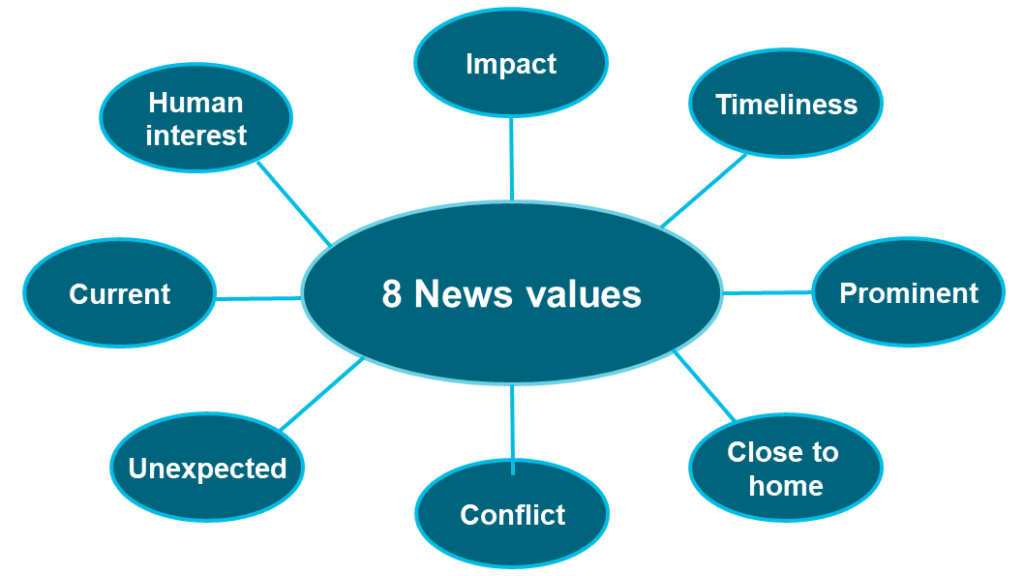
These are the most commonly held criteria. There are others: negativity (for instance, bad weather stories) and positivity (feel-good tabloid stories). However, there is no overall agreement among journalists on precisely which ones to consider when selecting a story. Important events may influence current thinking.
Impact, for instance, identifies the number of people affected by a story. The more people involved, the more newsworthy the story. The Coronavirus pandemic in 2020 has evoked worldwide concern. COVID-19 dominated news platforms worldwide. A pandemic of that magnitude had a strong news value and was of considerable public interest in many respects.
Before you explore news values in greater detail, you may like to take a look at some definitions of what is news.
The selection of news stories
Contents
How news values help the journalist
Information arrives in the newsroom minute by minute. It comes from a wide range of sources by way of press releases, phone calls, social media, meetings and research.
However, a newspaper has a limited number of pages and column inches to report the day’s events. A news broadcaster has only so many minutes.

Restricted by time and space, a news editor cannot report all that is of interest. So, they must be selective, filter out information that lacks newsworthiness and retain stories that most interest their audience.
Thus, anyone wishing to get their story reported in the news media must understand what ingredients are needed for a good newsworthy story.
A knowledge of news values also helps public relations professionals to maximise media coverage of their events. As a result, they can be more effective in boosting their clients’ profile.
Journalists are always on the look-out for strong stories that are in the public interest. Their knowledge of news values will enable them to select stories that can boost their circulation or media ratings.
Those responsible for deciding the news agenda are sometimes called “gatekeepers”. Gatekeeping takes place at many levels – the newspaper or broadcast station’s owner, its editor and senior journalists. Lower down the hierarchy, reporters will also exercise similar judgements when they choose who to interview and what parts of their reply should be included in their report.
The news agenda can vary from publisher to publisher. It reflects the style, ethos and ideology of each media outlet and the target audience they wish to attract. Newspapers, for instance, tend to have a political persuasion that reflects the their proprietors’ views.
Audience perception
The news process is a two-way transaction, involving both the journalist and their audience who may have different priorities. Newspaper circulation figures and media viewing ratings reveal the most popular stories. Thus, consumers make known the kind of the news that interests them most when they choose a particular broadcast channel or newspaper.
However, this is a rough and ready measure. Little work has been done to define equivalent factors or news values that determine an audience’s perception of news. This is largely because members of any audience will have differing interests. It is therefore difficult to define common factors that generate widespread interest.
Much of the research undertaken so far concentrates on what the journalist determines as news. However, the arrival of social media has enabled anyone with a mobile phone to publish news.
The boundary between journalist and audience is becoming more blurred. With the growth of citizen journalism and interactive media, the audience may also determine what is news.
News values as criteria for selecting a newsworthy story

A broadly agreed set of criteria or news values enables journalists to spot a newsworthy story. They provide journalists with a useful tool to quickly sort, process and select news from a vast amount of available information.
Rather than ticking off a checklist of criteria, seasoned journalists tend to judge newsworthiness on the basis of their experience and intuition. Even so, whichever approach they take, the same news values underlie their choice. Indeed, journalists from across a range of print, broadcast, and online news organisations apply similar news values worldwide.
What makes events become news has generated considerable research among academics and practitioners from various backgrounds. Over the years, scholars and journalists alike have revised and drawn up lists of appropriate news values.
Such lists are endless. Some aim to describe news practices across many different cultures, while others are specific to one nation or place. The debate has widened as sociologists, linguists, psychologists, anthropologists and practicing journalists discuss the issues from their own academic perspectives.
Headlines and lead paragraphs
Do leads and headlines reflect the same news values as the full story? The opening paragraph or lead of a well-structured news report will usually summarise the whole story. To contain the gist of the story, a lead paragraph should answer all the basic questions: who, what, where, when, why and how. Thus, it is likely the introduction will share the same news values or ingredients as the expanded report.
But this may not necessarily be so with a headline. A good headline has several functions. First, it enables readers or viewers to select news stories which interest them most.
However, a headline must catch the eye and grab attention. One way of achieving this is by withholding a part of the story, thereby arousing curiosity and stimulating interest.
Since the arrival of the internet and search engines, there has been a shift towards search-based discovery. So, a headline must also take keywords into consideration.
Despite this, readers need to understand what they can expect from your news story or article by scanning the headline. So, generally a headline should reflect the story. But there’s always room for the unexpected.
The full text unpacks and relates the story in detail, starting with the most important facts. Read the whole story and you should be able to identify all its news values.
Who uses news values?
- Journalists use them to assess the newsworthiness of a story
- Public relations consultants employ them to get good news coverage
- Sociologists study them to monitor the media industry
- Politicians make use of them to get elected
- Teachers apply them to interest their students
- Preachers wield them to spread their faith
The list is endless. If you want to communicate or pitch a good story, pay attention to its news value. Think like a journalist.
8 news values that drive today’s top stories
News values provide an easy check list from which journalists can assess what is newsworthy. So, what are the ingredients of a good story? Which events most interest an audience? Which stories make the front page? Here are 8 news values to help you spot a newsworthy story:
Impact

The more people involved in an event, the stronger the story. Whether it is a peaceful protest that draws tens of thousands of people, or a 72 vehicle pile-up on the motorway, it has impact.
Likewise, the number of people affected by such events will also influence the story’s newsworthiness. For instance, a rise in income tax may, at first sight, seem the basis of a dull, depressing article. But it has impact because it will affect most people’s pockets.
In January 2025, California experienced its worst wildfire disasters as an uncontrollable blaze engulfed several kilometers of land in Los Angeles. Iconic for its Hollywood film industry, it destroyed the homes of big stars such as Billy Crystal, Mel Gibson, Anthony Hopkins, Jamie Lee Curtis, James Woods.
Everyday issues such as health, welfare, transport or national security also have a big impact and generate considerable public interest. However, no event can have had more impact than the outbreak of the Covid-19 pandemic in the early 2020s.
Timeliness
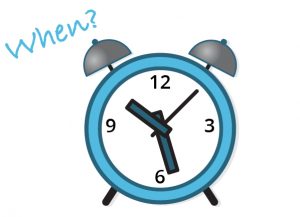 News gets out of date quickly. If it happened recently, it is timely. What is regarded as “recent” depends upon the publication cycle of the news medium itself. On a television news channel events that happened during the past half hour are timely. These may include a multiple car crash or a serious fire. By contrast, in the monthly parish magazine events that took place over the past 30 days are timely.
News gets out of date quickly. If it happened recently, it is timely. What is regarded as “recent” depends upon the publication cycle of the news medium itself. On a television news channel events that happened during the past half hour are timely. These may include a multiple car crash or a serious fire. By contrast, in the monthly parish magazine events that took place over the past 30 days are timely.
An unfolding story has strong news value on social media or 24 hour news channels. Timeliness is crucial. The audience become involved because they witness the event as it develops.
Prominence


Well-known people such as politicians and celebrities, can make the news even when their actions are trivial. Because of their media prominence, people feel a personal connection with them.
In May 2024, Sir Ed Davey fell off a paddle board five times in 15 minutes as he took to Lake Windermere for a Liberal Democrat election campaign stunt to highlight the issue of sewage dumping, a key campaign issue in the general election.
Famous places and companies also attract interest.
Proximity or closer to home
Events occurring within the newspaper circulation or broadcast area are more likely to be newsworthy. They are closer to home.
So, local newspapers and regional television news programmes will be particularly alert to news that falls within their broadcast area.
Further afield, the UK press will almost certainly ignore 2,000 job losses in Taiwan. However, a mere 20 redundancies in Cambridge may well feature on the front page of the local newspaper.
A newsworthy story can also be closer to home psychologically. Six people killed in an air-crash in Australia on New Year’s Eve 2017 was hardly world news. However, a prominent British businessman, Richard Cousins, and his family of four were among the victims in the seaplane. It was front page news in the UK.
Conflict
If it bleeds it leads, so says the old newspaper adage. An event that results in blood, death or tragedy usually leads. For instance, it could be about a terrorist attack, murder, or even a parliamentary dispute.
On a more mundane level, news about people or organisations at odds with each other arouse curiosity. People want to know what lies behind the conflict.
The story could be about banal events such as the falling-out of two celebrities. Or it could be about more serious issues, such as a labour dispute. Conflict adds drama. Drama generates interest.
Unexpectedness or bizarre

Strange, odd or wacky stories are likely to find their way into the news because they deviate sharply from what you would expect. The unusual entertains.
Dog bites man is not news. Man bites dog is. On April 10, 2018 the Daily Telegraph ran an article about a man biting a dog — to defend his own dog!
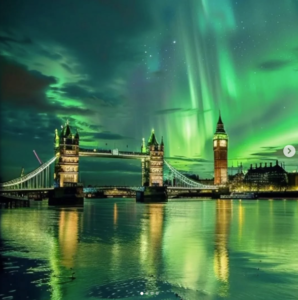
Stargazing in London at night is sometimes a challenge amid the glow of city lights, but the capital received a rare treat when the Northern Lights appeared. Nationwide displays are a very rare occurrence indeed. The lights, also known as aurora borealis, could be seen right across the country thanks to one of the strongest geomagnetic storms in years.
Currency or trending stories
Social media has enabled people to share opinions with a far wider audience. When a phrase has been used multiple times, for example, on X (formally Twitter), it becomes a ‘trending topic’. Journalists can capitalise on the current conversation by checking social media trends and finding out what is holding people’s interest.
Stories that are already under the public spotlight, and being talked about, are more likely to be newsworthy. For instance, global warming continues to be a hot topic as it has a direct impact on the global population. Extreme weather events in 2024, such as the Europe’s hottest temperatures, devastating Spanish floods, and hurricane winds in the UK have all played their part.
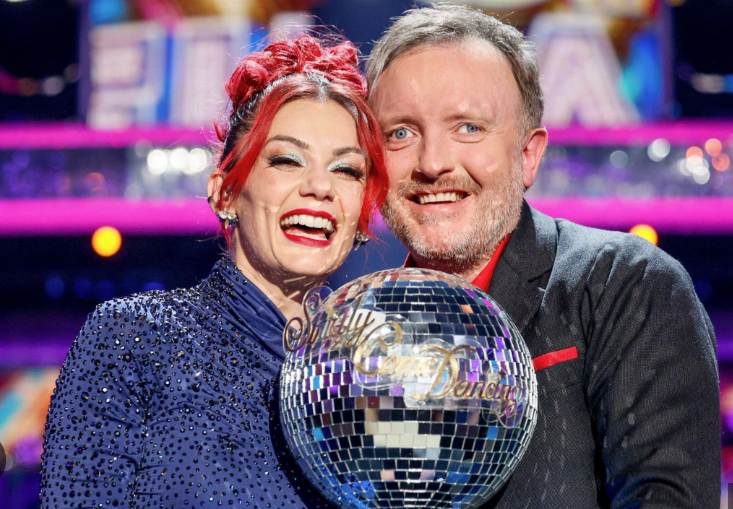
Many topics experience a surge in popularity for a limited period of time. One such story which caught the public eye was the tenacity and determination of the blind comic, Chris McCausland. With his partner, Dianne Buswell, they overcame his disability to win the coveted glitter ball on BBC’s 2024 Strictly Come Dancing competition.
Against all odds and believing he would be knocked out in the first week of the show, Chris’ efforts caught the nation’s heart as week by week he stunned judges and audience alike by his outstanding performance.
Latest fads and anniversaries, especially items that were news in the past, also fall into the currency category. As the old year ends, the talk is all about presents and New Year’s resolutions.
Six weeks later in February, the flavour of the month switches to flowers and romance.
Human interest
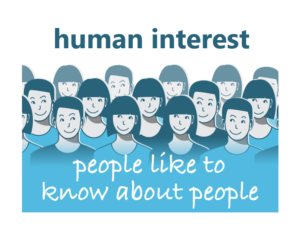
People are interested in people. Certain events stir our emotions. Both a dying child receiving a donated organ and families reuniting after fifty years are good examples of human interest stories.

In July 2022, the scorching record breaking temperatures hit the UK with disastrous effect but there were also instances of human altruism. In Ashill in Norfolk, fields caught fire causing a wildfire to sweep through and destroy eleven homes, and damaging many more. Many lost everything they owned, but those affected have said that “the kindness of the community has been overwhelming” and “kept them upright.” (Source, BBC News).
People’s everyday concerns strike a chord, for instance stories about food, health and housing. Information about schools, work and money also grab public attention.
Multiple news values in a story

There are some stories that satisfy more than one news value. The Syrian uprising, the covid pandemic and the Ukrainian war are such big stories that they meet all 8 news values.
Russia’s president, Vladimar Putin’s decision in February 2022 to invade Ukraine has undoubtedly had impact worldwide. As events continue to unfold, each new development is timely. The level of conflict and the imposition of sanctions have seriously affected most nations across the world and has no doubt been prominent in the media worldwide. The arrival of Ukrainian refugees in Europe has brought the war close to home and there are many local stories of considerable human interest. On the back the worldwide Covid pandemic, the invasion was unexpected. The media continue to take an interest in the many new developments which are currently emerging, not least Ukraine’s ability to regain territory.
Do journalists prefer bad news stories?

Many lists of news values include negativity as a criterion. Most audiences will invariably perceive certain events, such as a pandemic, famine or death, as bad news. But other events may evoke differing reactions. For some people an event might be negative, while others it would not.
The terrorist attacks on the Twin Trading Towers in New York in 2001 was the worst in America’s history and had a devastating and far reaching effect on the both the city and the world economy. However, in the Middle East, where America was considered an enemy, people were seen cheering in the streets.
On a more mundane level, a defeat for the Republicans in the USA would be good news for Democrats. Improved cycling infrastructure may be welcome to cyclists, but motorists might think otherwise. Likewise a sports match result is either good or bad news depending on which team you support.
However, journalists will often deny they select a story simply because it is negative. Rather, their choice depends on the presence of other news values.
A bad news story is of interest if it is about events that are:
-
- out of the ordinary
- making considerable impact
- easy to grasp
- meaningful and readily identified with
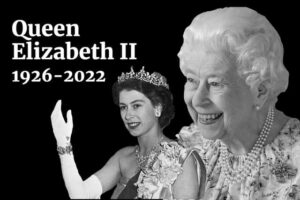
Interest is the overriding factor in deciding newsworthiness. The more news values a story satisfies, the more likely it is to be newsworthy.
The recent death of Queen Elizabeth II was headline news for ten days, and wide news coverage appeared on television channels across the world. As Britain’s longest reigning monarch of seventy years, her life, her example, her passing and the proclamation of King Charles III ticked almost all the news values required for headline news. A bitter sweet moment when people across the world mourned the loss of the Queen and celebrated the ascension to the throne of her son.
Editors have their particular target audience in mind. Thus each news organisation will have its own priorities when setting its news agenda. Even so, they will adopt roughly the same news values.
But if journalists are constantly telling a negative story, they are not giving their audience the most accurate or balanced portrait of reality. They are distorting it. For instance, they are doing a good job explaining why Covid cases are rising in some places and how the vaccines are imperfect — but are they doing such a good job at explaining why cases are falling elsewhere or how the vaccines save lives?
Journalists have their own distinctive understanding of their circulation or broadcast area. They draw heavily on their own experience of what their audience expects and which stories have had the greatest impact on public consciousness.
Galtung and Ruge’s list of 12 news values

Back in 1965, two Norwegian social scientists made the first in-depth study of news values. Johan Galtung and Mari Holmboe Ruge developed a classical definition of what constitutes these criteria.
Their research focussed on newspaper reports of the Congo, Cuba and Cyprus crises. They set out to discover why these “events” became news.
The two researchers framed a ground-breaking list of 12 news values which explained how journalists select their stories.
By studying reports in the Norwegian press, they discovered which values placed an event high on the news agenda. Altogether, they looked at 1,262 press cuttings – including news items, features, editorials and readers’ letters.
Galtung and Ruge identified news values which seemed to be “particularly important” in selecting news reports. By devising a scoring system, they could rank the reports in order of their newsworthiness. Events with a high score on one or more news values were most likely to be prominent news stories.
Each news value described one characteristic of a newsworthy event. They concluded:
- An event that satisfies one or more of these criteria is more likely to be reported.
- One which scores highly on these values is more likely to be the lead story.
- Rarely will a story exhibit all these news values.
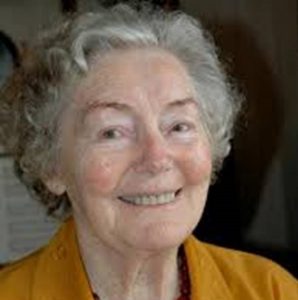
Their findings have made it possible to predict before publication which news stories generate the most attention.
Since then, most news organisations have evolved their own approach for setting news agendas. However, they still continue to draw heavily on this research. Almost all recent lists of news values refer to most of the criteria Galtung and Ruge originally identified.
Many academics have attempted to refine their work, but journalists tend to use alternative lists which tend to be simpler and less analytical.
Galtung and Ruge’s work has been a major influence on our understanding of what makes a story newsworthy.
The 12 news values they identified fall into three categories:
- Impact
- Audience Identification
- Pragmatics of media coverage
Impact
Threshold
The scale or size of an event. An event must exceed a threshold before being recorded. Beyond that threshold, the more people a story affects, or the more money or resources it involves, the bigger its impact. The greater its intensity and the more extreme its effect, the more likely it is news. For instance, the more gruesome the murder or the more casualties in an accident, the better its chances of hitting the news-stands.
Frequency
Events that suddenly occur are most newsworthy. For instance, motorway pile-ups, murders and plane crashes. This is because they fit well with a news producer’s schedule. Events which unfold gradually, or at inconvenient times, are less likely to be reported. Long-term trends are also unlikely to receive much coverage.
Negativity
Bad news is more exciting than good news. Stories about death, tragedy and bankruptcy always rate higher than positive ones such as royal engagements or celebrations. So do stories about violence, damage, natural disasters, political upheaval or simply extreme weather conditions. These stories may also score higher on other news values, particularly threshold, unexpectedness, unambiguity and meaningfulness.
Unexpectedness
Journalists are likely to select an event that is out of the ordinary rather than an everyday occurrence. As the New York Tribune and Sun editor, Charles A Dana. famously put it, “If a dog bites a man, that’s not news. But if a man bites a dog, that is news”.
Unambiguity
Events that are easy to grasp are more likely to become news. The more clearly an event can be understood, the greater its news value. Stories with a complex background and depend on specialist knowledge tend to be ignored.
Audience identification
Reference to people
People are interested in people. News stories presented from a human-interest angle and centre on a particular person are more likely to be newsworthy. News tends to present events as the actions of named people rather than the result of social forces. Any well-attended marathon will attract news coverage. But the story of someone with a disability completing a marathon will attract even more interest.
Meaningfulness
This relates to cultural proximity, the extent to which the audience identifies with the topic. Stories about people who speak the same language, look the same, and share the same concerns as the audience receive more coverage than those involving people who do not. For instance, news from the United States, which shares the same language and similar values, is seen as more relevant to the United Kingdom.
Reference to elite nations
Stories concerned with global powers receive more attention than those dealing with less influential nations. Those nations which are culturally closest to our own will also receive preferential coverage. What constitutes an elite nation may vary from country to country. However, there may be more widespread agreement about which nations are most able to exert their influence on a global scale. For instance, America and China.
Reference to elite persons
Stories about important people get more coverage. The media pay attention to the rich, powerful, famous and infamous. Editors prefer people whose deeds are seen as having more influence on their audience rather than others. Hence, the American President gets better coverage in a national newspaper. Your local councillor is more likely to hit the headlines in the local paper.
Pragmatics of media coverage
Consonance
Stories which match the media’s expectations get more coverage than those which contradict them. Journalists are more likely to cover an event for which they are prepared. Indeed, they often have a preconceived idea of the angle to take even before they get there. This mental pre-image in turn increases its chance of becoming news. At first sight, this appears to negate the notion of unexpectedness. However, consonance refers to the media’s readiness to dispatch resources to an event which already promises to be newsworthy.
Continuity
A story which is already in the news gathers a kind of momentum. In other words, it is a running story. Once it has become headline news, it remains under the media spotlight for some time. This is partly because news teams are already in place to report the event. It may also be because previous reportage has made the story more accessible to the public.
Composition
Editors seek to provide a balance of different types of coverage. This means stories must compete with one another for space. For instance, if there is an excess of newsworthy foreign news, some of these stories may be dropped to make way for less important domestic news. So, the prominence given to a story may depend on the news value both of itself and also competing stories. This becomes a matter for the editors’ judgement.
Galtung and Ruge’s three hypotheses
Galtung and Ruge tested three basis hypotheses:
- Selection: the more events satisfy the twelve news values they identified, the more likely they will be registered as news.
- Distortion: once a news item has been selected, its newsworthiness will be accentuated according to its values.
- Replication: both the process of selection and the process of distortion will take place at all steps in the chain, from the event itself to its reader.
How suitable are these news values for today’s journalism?
On the whole this analysis has stood the test of time. However, it has some shortcomings. For instance, it fails to fully take account of the broader pragmatic reasons why certain news stories are not reported.
One example was the mass Burmese demonstration in 1988 which received little media attention. Overseas journalists could not get into the country, because the hostile regime of General Ne Win had barred them.
By contrast, the mass demonstration in 2007 received far more attention because civilians themselves had the technology. Armed with modern mobile phones and camcorders, they were able to send instant messages and pictures out of the country to a waiting international media.
Galtung and Ruge focus on the event rather than the journalist. In so doing, their news values fail to account for those factors which can be attributed only to the journalist, and not the story itself.
At a personal level, practical everyday factors can also influence which story journalists select. For instance, what are their interests? What are their time constraints?
Much of what appears in the news can depend on a journalist’s determination to get the full story. An easy way out would be to run a story straight from a press release, and say no more. However, the professional journalist will go the extra mile, check out the facts and relate the full story from their own research.
Critique of Galtung and Ruge
Tony Harcup and Deirdre O’Neill, in their study of the British press in 2001, updated Galtung and Ruge’s original criteria. They analysed the content of three major national newspapers and put forward a contemporary set of news values. They found some notable differences that contributed to the value of a news story, such as:
- the growing interest in celebrity
- a tendency to report good news as well as bad
- the newspaper’s own agenda.
In 2016, Harcup and O’Neill re-examined news values within mainstream journalism to take account of the rapid rise of digital technology They concluded that potential news stories must generally satisfy one and preferably more of the following values :
- Exclusivity, stories exclusive to the news organisation as a result of interviews, surveys, polls, and so on
- Bad news
- Conflict
- Surprise
- Audio-visuals, stories that have arresting pictures
- Shareability, likely to be shared on social media.
- Entertainment
- Dramatic content
- Follow-up stories
- The power elite
- Relevance to the audience
- Magnitude or impact
- Celebrity
- Good news
- News organisation’s own agenda
Harcup and O’Neill add the proviso that factors such as “the availability of resources and time”, the “cultural influences on journalists” and “type of audience” for whom they write also govern their selection of news stories.
Technology and timeliness
When newspapers were the only source of news, competition was less fierce. But gone now are the days of typewriters, newspaper clippings and messages left at hotel reception desks.
Today, information travels around the world at breakneck speed. Digital technology, wireless connectivity, and text messaging have arrived. Within the past few decades, the production of news has changed beyond recognition.
These changes influence the criteria that journalists use to select a news story. Timeliness, for instance, has become an all important factor in deciding the value of a story.
New technology has dramatically altered the collection, assembly and dissemination of news. Easy access to a wide range of sources through mobile phones, email and social media has made it easier for professionals to collaborate with citizen journalists.
Today, the public pay scant attention to second-hand or stale stories. News must be timely. Eager to be first with a story, journalists can cut the gap between receiving information and publishing a story.
When it comes to breaking news, citizen journalists on the spot can record and stream events as they happen. Immediacy is crucial in the hard-nosed business of modern news production.
The actual process of news gathering and reporting has benefited considerably from technology. Yet over the same period, the basic news values that make a good news story remain much the same. People seek accurate and reliable journalism and they still want interesting stories.
Giving audiences the news they want continues to be the goal for media outlets seeking to improve their market share.
The effects of new technology may in time radically influence an audience’s preference for certain kinds of news story. There is already evidence that audiences prefer shorter stories.
News organisations must be more open to audience input and feedback. So could these developments eventually bring about further changes to our currently accepted news values? My article on Technologies and timeliness explains how changing technology has influenced journalists’ judgement.
News values as ethical standards
Throughout this article I have been using the word ‘value’ in a practical sense. We journalists usually use it to mean the worth or usefulness of criteria to identify the newsworthiness of a story.
However, some news organisations use the word in an ethical sense. They use the term ‘News Values’ to describe the ethical standards of behaviour expected of journalists in their work. This is an entirely different concept. They are laying down ethical principles.
For instance, Associated Press emphasise their commitment to five so-called news values. The BBC also publishes a list of its Editorial Values on its website.
These ground rules spell out good journalistic practice which can be applied to news production and encourage responsible journalism. Their aim is to improve the integrity of their journalists and the reliability of their reporting.
Find out more about this on my Journalism Ethics page.
This article on News Values was first published in 2003. It is regularly updated and was last revised in 2021.
I update this work regularly and welcome your feedback. I am always interested to know if it answers your questions about news values. Have you found it easy to understand?
If you are a writer, I have some other useful tips on how to 16-tips-on-how-to-write-clearly and communicate a story clearly.
Other articles
You can visit any of the following pages from here:
